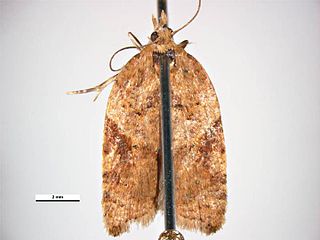 W
WAcleris comariana, the strawberry tortrix, is a moth of the family Tortricidae. It is found in Europe, the Caucasus, Amur, Kamchatka, China, Korea and Japan.
 W
WAcromantis japonica, common name Japanese boxer mantis, is a species of praying mantis found in Japan, Korea, Taiwan, and China. It was described by John Obadiah Westwood in 1889. Acromantis japonica belongs to the family Hymenopodidae and subfamily Acromantinae. No subspecies are listed.
 W
WAgelaia pallipes is a species of social paper wasp found from Costa Rica to Argentina and Paraguay. A. pallipes is ground-nesting and is one of the most aggressive wasps in South America. This species is a predator of other insects, including flies, baby birds, moths, and ground crickets.
 W
WAmantis nawai is a small species of praying mantis native to Eastern Asia. Amantis nawai are parthenogenetic, and males are uncommonly seen.
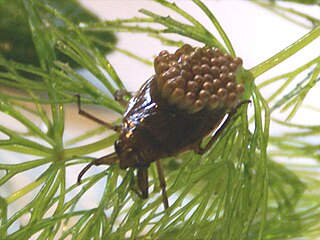 W
WAppasus japonicus is a species of giant water bug in the family Belostomatidae. It is found in Japan and Korea, and has been much studied because it provides an example, rare among insects, of paternal care of the young. With the destruction of its typical habitat and its poor dispersal abilities, it has been listed as being an endangered species in Japan.
 W
WAquatica lateralis, known as "heike-botaru" in Japanese, is a species of firefly found in Russia, Japan and Korea. It was formerly placed in the genus Luciola. The larvae are aquatic and live in rice paddies.
 W
WArgynnis ruslana is a species of butterfly in the family Nymphalidae. It is found in eastern China, Amurland, Korea, and Japan.
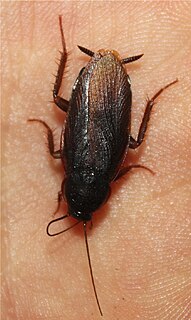 W
WAsiablatta kyotensis, formerly in the genus Parcoblatta, is an endemic roach from Far Eastern Asia. On June 24, 1962, an unfamiliar male roach was captured in Kyoto City. This cockroach was an entirely unknown insect from Japan, and was later described as Parcoblatta kyotensis by Asahina in 1976.
Bastilla arctotaenia is a moth of the family Noctuidae. It is found from Japan, Korea and the Indo-Australian tropics throughout to India, Sri Lanka, Myanmar east to New Guinea and Queensland. It has also been recorded in Vanuatu and Fiji.
Dysgonia mandschuriana is a moth of the family Noctuidae first described by Staudinger in 1892. It is found in China, Japan, Korea and the Russian Far East.
 W
WDysgonia stuposa is a moth of the family Erebidae first described by Johan Christian Fabricius in 1794. It is found in Korea, Cambodia, China, India, Indonesia, Japan, Nepal, the Philippines, the Russian Far East, Sri Lanka, Taiwan and Vietnam.
 W
WErcheia dubia is a species of moth of the family Erebidae first described by Arthur Gardiner Butler in 1874. It is found in Asia and in Australia and New Guinea
Ercheia umbrosa is a species of moth of the family Erebidae. It is found in Japan, Korea, China and India.
 W
WThe rufous grasshopper or Gomphocerippus rufus, is a medium-sized, broad, brown, 'short-horned' grasshopper with clubbed antennae that are tipped with a conspicuous white or pale colour. It is fairly large, averaging 14 to 22 mm in length. It is of the subfamily Gomphocerinae in the family Acrididae, the predominant family of grasshoppers. This species is present in most of Europe, in the eastern Palearctic realm, and in the Near East. It can be encountered from late July through mid-December, usually in dry or slightly moist habitats. The environments in which it typically resides include dry grassland on calcareous soils, sheltered valleys with scrub, and the open borders of forests. It feeds on grasses and various herbaceous plants. It is known for its distinctive courtship song and accompanying display.
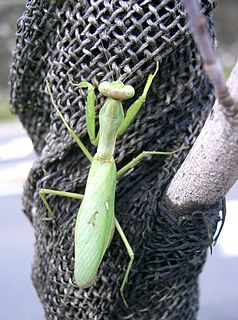 W
WHierodula patellifera, common name giant Asian mantis, Asian mantis, Indochina mantis or Harabiro Mantis, is a species of praying mantis belonging to genus Hierodula.
 W
WLibellula angelina, also known as bekko tombo, is a species of dragonfly in the family Libellulidae, native to China and Japan. It is under threat by rapid loss of the ponds and other small water bodies it uses as habitat, and is currently classified as critically endangered by the IUCN.
 W
WLucanus maculifemoratus is a beetle of the Family Lucanidae. This species is known as Miyama stag beetle in Japan. These beetles have a light covering of golden hair on their back, mostly around the rear edges.
 W
WLygephila craccae, the scarce blackneck, is a moth of the family Erebidae. It is found in temperate Europe and across the Palearctic to the Altai Mountains, Korea, Japan and China.
 W
WNehalennia speciosa is a species of damselfly in the family Coenagrionidae. It is found in Austria, Belarus, Belgium, the Czech Republic, Denmark, Estonia, Finland, Germany, Italy, Japan, North Korea, Latvia, Lithuania, Luxembourg, the Netherlands, Poland, Romania, Russia, Slovakia, Sweden, Switzerland, Ukraine, possibly France, and possibly Kazakhstan. Its natural habitats are swamps, freshwater marshes, and open excavations. It is threatened by habitat loss.
 W
WPapilio macilentus, the long tail spangle, is a butterfly of the family Papilionidae. The species was first described by Oliver Erichson Janson in 1877.
 W
WParnassius nomion, the Nomion Apollo, is a forest steppe butterfly which is found in the Urals, Altai, south Siberia, Amur and the Ussuri region, Mongolia, China and Korea. It is a member of the snow Apollo genus (Parnassius) of the swallowtail family (Papilionidae).
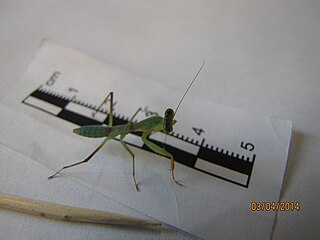 W
WRhombodera valida is a species of praying mantises in the family Mantidae, found in Indomalaya.
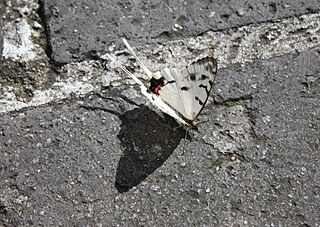 W
WSericinus montela, the dragon swallowtail, is a member of the subfamily Parnassiinae of the swallowtail family, Papilionidae. It is found in the Russian Far East, Korea, China and Japan.
 W
WSpirama helicina is a moth of the family Erebidae first described by Jacob Hübner in 1824. In older texts, the species was classified as morph of Spirama retorta.
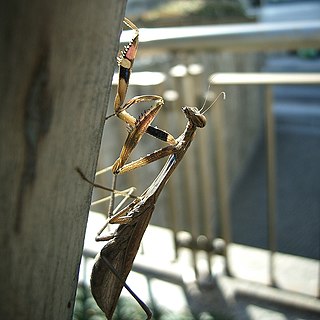 W
WStatilia maculata, common name Asian jumping mantis or "小蟷螂", ko-kamakiri or "좀사마귀", joem-sa-ma-gui, is a species of mantis native to Asia that can be found in China and Japan and Korea and Sri Lanka.
 W
WTachycines asynamorus is a cave cricket and the type species of the genus Tachycines (Rhaphidophoridae). In English-speaking countries it is known as the greenhouse camel cricket or greenhouse stone cricket for its propensity for living in greenhouses. It was first described in 1902 by Russian entomologist Nicolai Adelung. Some authorities have placed this species in the genus Diestrammena, but it has now restored to its basonym.
 W
WTenodera angustipennis is a species of mantis native to Asia and nearby areas of Oceania. The species was introduced and became established in the eastern United States. Tenodera angustipennis was noticed as early as 1921 in Aberdeen, Maryland, but that occurrence was not noted in a published record until 1933.
 W
WTenodera aridifolia is a species of mantis in the subfamily Mantinae. Common names include Japanese giant mantis, オオカマキリ oo-kamakiri in Japan. It is also known as the Chinese mantis, not to be confused with Tenodera sinensis, which has the same common name. T. sinensis was once considered to be a subspecies of the Japanese giant mantis.
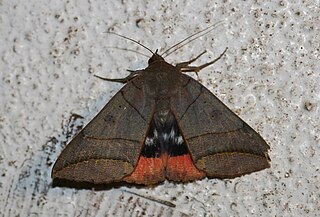 W
WThyas juno is a species of moth of the family Erebidae first described by Johan Wilhelm Dalman in 1823. It is found in the Indian subregion, China, Japan, Korea, Thailand, Borneo, Java, Sulawesi and on the southern Moluccas.
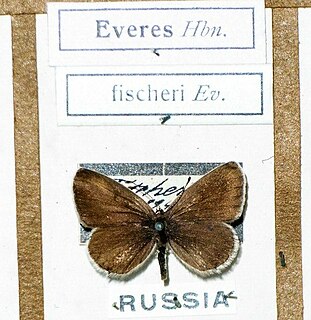 W
WTongeia fischeri, or Fischer's blue, is a butterfly of the family Lycaenidae. It was described by Eduard Friedrich Eversmann in 1843. It is found in south-eastern Europe, the southern Ural, northern and eastern Kazakhstan, south-western and southern Siberia, the Russian Far East, Mongolia, China, Korea and Japan.